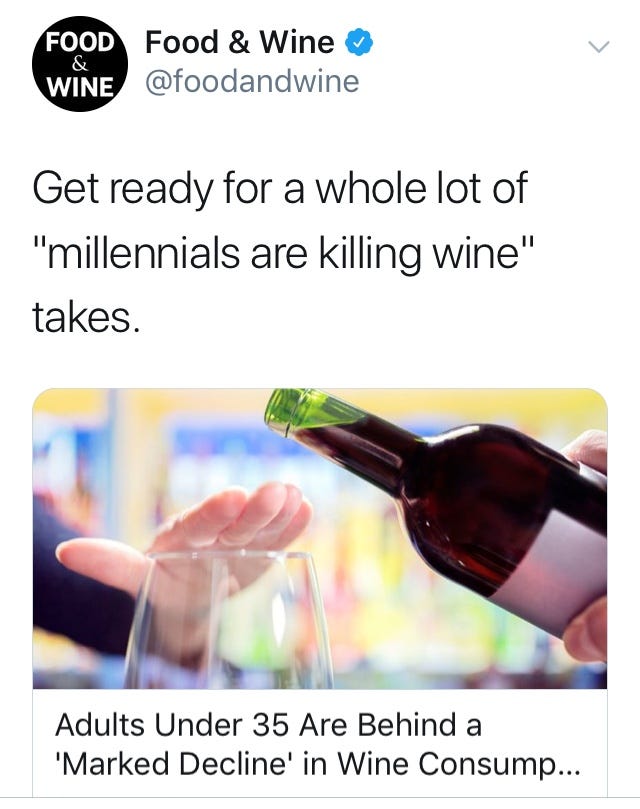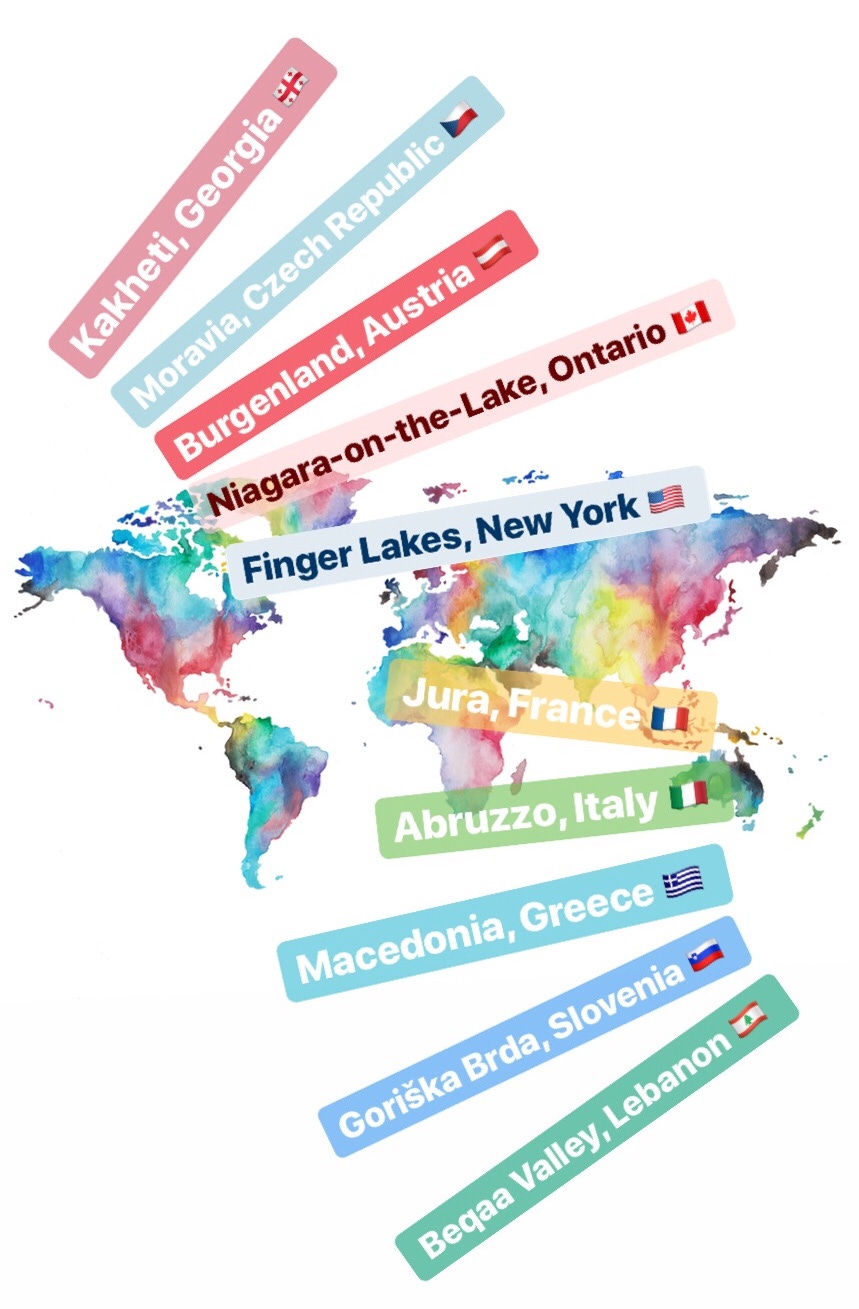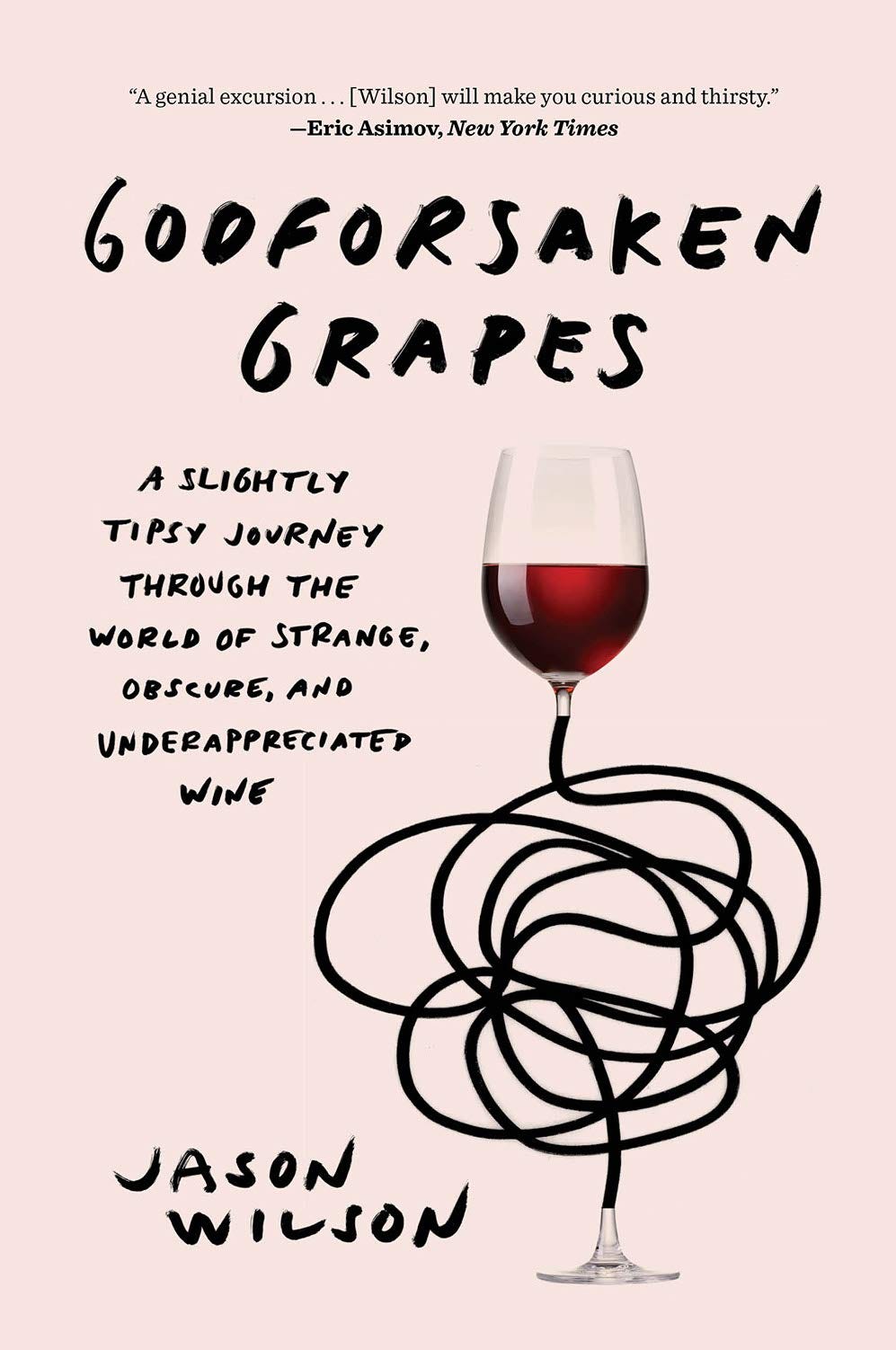Millennials and Wine: A Hot Take
Millennials Are Not Killing Wine. If anything, their curiosity, interest to try new things, and desire to want to know the story behind something is driving the natural wine movement. But a new report says that those aged 35 and under may be putting a dent in the U.S. wine industry. Anecdotal trade information suggests wine is losing traction with its younger drinkers. But the anecdotal info coming from my brain suggests the opposite. It is the new generation of wine drinkers, makers, importers, writers, and restaurant/bar owners who are bringing awareness to natural wine. In the same way millennials helped changed the way we eat (by wanting to know how their food is made), it’s no surprise they are changing the way we drink too: the wine industry is apparently becoming more transparent and international than ever. Consumers are wine woke: they are engaged, they want authenticity, and they are expanding their tastes beyond the O.G. wines of Bordeaux, for example, to those from Jura. Like everything else, it comes down to dollars and cents, and while millennials may not be buying wine in the numbers that producers and marketers were expecting, their desire to explore wine is improving the availability of better wine. Sometimes it’s more about Dollaz + Sense - emphasis on the sense - and the world of wine is changing with the help of the younger generation. So maybe what’s putting a dent in the wine industry is actually just knowledge and awareness.

New-To-Me Wine Regions. Before discovering natural and more interesting wines, all I really knew was the consistent and the familiar. But true to the news that consumers want more local, sustainably sourced wines, but at the same time they are expanding their palates, I am now searching for wines from Ontario, and am regularly Googling producers from regions I didn’t know made such great wine, like Georgia, Slovakia, Czech Republic, and Austria. Well-known wine regions often steal the spotlight but there are a number of high-quality wines worth tasting in more unexpected regions across the globe.

On Obscure Grapes and Robert Parker. My exploration of wine regions led me to discover varieties like Trousseau, Poulsard, Blaufränkisch, and Zweigelt. It also led me to Jason Wilson, a proponent of obscure grapes who wrote about why certain varietals became popular. Case in point: there are over 1,400 wine grapes in the world, yet only 20 of them make up almost 80% of the wines that we drink. His book’s title, Godforsaken Grapes, came from wine critic Robert Parker when he went on a tirade about what he considered to be misplaced interest in grapes he felt were unimportant and incapable of making great wines. But in seeking out different wines, I have learned more about wine and gained a better understanding of what I like. Which reminds me of the Eric Asimov column that suggests there are two types of wine drinkers: those who value consistency, and those who find wine interesting enough to explore. Which sort of mirrors the two types of winemakers: those who use interventions and additives to mass produce wine (often larger commercial wineries), and those who make wine as naturally as possible (often smaller independent wineries). And those winemakers who are focusing on indeginious/obscure varieties are often also committed to organic farming, hand harvesting and natural winemaking techniques. Parker - who has called natural wine an undefined scam (!) - has made a career rating wines to the point that vintners were changing their wines to please his palate. A natural winemaker makes wine that truly expresses its place of origin (terroir) and is driven by their values, not profit - these winemakers pursue a vision, much like an artist imagines a work. Marketing wines based on a numerical rating may be fine for some, but the industry is experiencing a change and the influence of a certain type of critic is on the wane. I tend to be more influenced by word-of-mouth and Instagram posts from the natural wine community - which is basically the antithesis of Big Wine’s marketing efforts - as it seems more authentic than a rating. (I know this issue was long but I think it still deserves a 93+ for its deep dive on demographics, geography and wine wokeness, kthanksbye).



